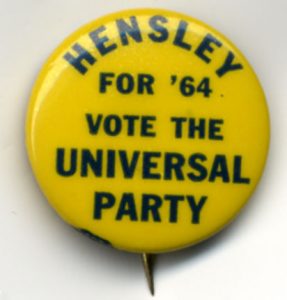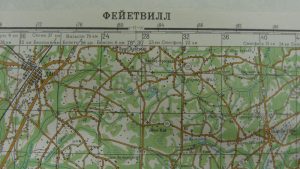
“The Rev. Kirby Hensley, who ordained millions around the world through a mail-order ministry based in Modesto, Calif., died [March 19, 1999] of cancer. He was 87.
“Rev. Hensley’s Universal Life Church was viewed as something of a lark by many who sent him $5 for ministerial licenses, but it was an intensely serious matter for the Internal Revenue Service, [which] spent years challenging his tax exemption.
“His church had no doctrine other than ‘Do that which is right,’ and its patriarch thumbed his nose at organized religion and government tax collectors. His philosophy: ‘I always stand for freedom, food and sex. That’s all there is. It sets people free.’
“Rev. Hensley started his ministry in 1962 in his garage. By the early 1990s it claimed 16 million members, but he continued to live in a modest home and to work as a carpenter.
“In 1968 he ran for president under the label of the Universal Party. One of his issues: civil treatment for visitors from other worlds.
“Rev. Hensley was born July 23, 1911, in Low Gap, N.C., in the Blue Ridge Mountains. He had preached in Southern Baptist churches by the time he was 20. He and his family moved to Stanislaus County [Calif.] in 1959.”
— From the Modesto Bee (March 20, 1999)
The Universal Life Church survived the death of its founder and now claims “Over 20 million ministers ordained worldwide!”
I suspect “Low Gap” is in fact the Lowgap community in Surry County. (Would you have guessed the Gazetteer lists no fewer than 11 topographic Low Gaps? But no High Gaps?)



